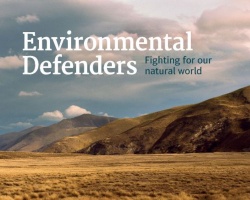Commission misrepresents industry training
Human Rights Commission misrepresents industry training
8 September 2005
“It appears the Human Rights Commission (HRC) has made a startlingly inadequate analysis of industry training to arrive at a preconceived idea of discrimination in its latest ‘National Equal Opportunities Network’ publication”, said Darel Hall Executive Director of the Industry Training Federation.
“The HRC has used negative and emotive language to create heat rather than shed light. For example the HRC says the Pacific share of Modern Apprentices at 2.3% compared to Pacific Youth (those under 25) ‘should set alarm bells ringing’.
“In fact Modern Apprenticeships are designed for people aged 16 – 21, not 0 – 24, and those people must be in work. There are no apprenticeships available for ten year olds.
“Similarly the HRC argues that the 14% share for Maori under-represents the Maori 21.3% share of the overall youth population.
“The truth is the proportion of Maori in Industry Training (17%) is almost twice the proportion of Maori in the employed work force (9%). Similarly the proportion of Maori Modern Apprentices (14%) is over 50% more than Maori in the employed work force.
“Maori are the most highly represented ethnicity in Industry Training according to the 2004 statistics collated by the Tertiary Education Commission from Industry Training Organisations.
“The ethnicity with the next greatest representation compared to their employment status is Pacific peoples in Industry Training, and European/ Pakeha in Modern Apprentices.
“ITOs are proud of their customized training for employers, and proud of customizing learning to fit people with different learning needs. We do a good job for trainees, and that includes Maori and Pacific peoples.
“The HRC needs to represent the situation accurately and stop mindless finger pointing that the facts don’t support”, said Darel Hall.
For further
information see:
ITF research on Maori and Female
participation
http://www.itf.org.nz/documents/Publications/Maori%20in%20Industry%20Training%20_web_.pdf
http://www.itf.org.nz/documents/Media%20Releases/Industry%20Training%202004.pdf
HRC publication
http://www.hrc.co.nz/hrc_new/hrc/cms/files/documents/06-Sep-2005_23-11-30_NEON4_breastfeedingrights.pdf
ENDS
Formed in 1996, the Industry Training Federation (ITF) is a membership-based organisation representing all 41 Industry Training Organisations (ITOs). The ITF advocates on behalf of its member ITOs to government and works with agencies and sector groups to improve the policy for and delivery of Industry Training.
Over 30,000 businesses and other organisations, and nearly 140,000 people were in Industry Training in 2004.
The costs of Industry Training are shared between employers and the government. In 2004 the government invested $125 million, while the industry contributed $47 million in cash. The total investment of industry is estimated to be at least 1.5 times the government investment.


 Environmental Defence Society: Groundhog Day, New Book Shows History Is Repeating Itself
Environmental Defence Society: Groundhog Day, New Book Shows History Is Repeating Itself NZEI Te Riu Roa: Mandated Single Approach To Reading Will Not Work
NZEI Te Riu Roa: Mandated Single Approach To Reading Will Not Work The Conversation: Could The School Phone Ban Work?
The Conversation: Could The School Phone Ban Work? Public Health Communication Centre: To Avoid A Measles Epidemic, Aotearoa Must Close The ‘Immunity Gap’
Public Health Communication Centre: To Avoid A Measles Epidemic, Aotearoa Must Close The ‘Immunity Gap’ Heritage New Zealand: Kid-friendly Archaeology Resource Kit Launched As Part Of Archaeology Week
Heritage New Zealand: Kid-friendly Archaeology Resource Kit Launched As Part Of Archaeology Week Tatai Aho Rau Core Education: Cyber Skills Programme For Tamariki Recognised At Māori Language Awards
Tatai Aho Rau Core Education: Cyber Skills Programme For Tamariki Recognised At Māori Language Awards